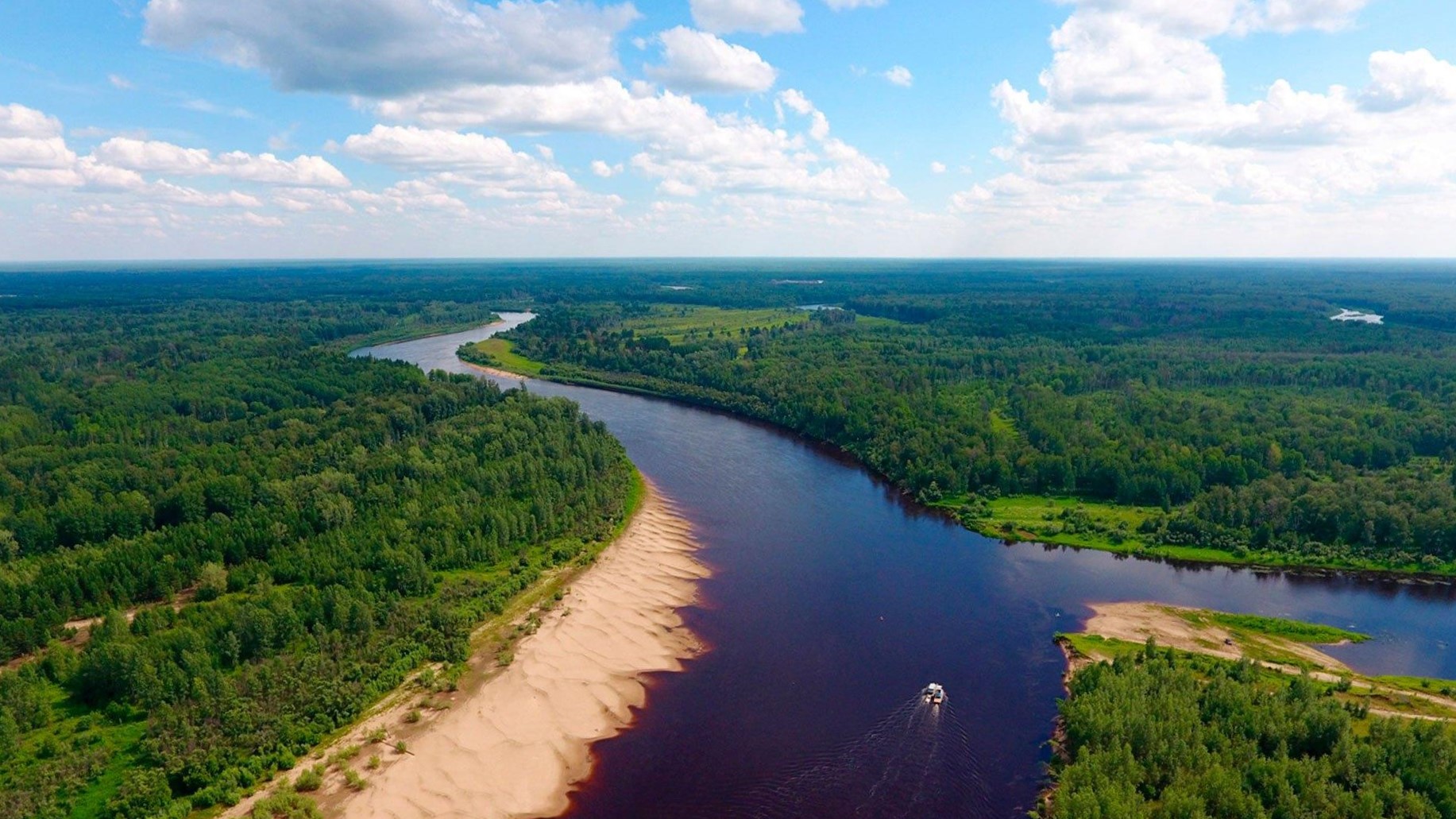Tomsk region

Status: Constituent entity of the Russian Federation, part of the Siberian Federal District
Date of foundation: 1944
The acting governor of the Tomsk Region: Vladimir Mazur
Chairman of the Legislative Duma of Tomsk Region: Oksana Kozlovskaya
Region center: Tomsk (founded in 1604) -population is 570,000 people (2022 census)
Administrative division: Tomsk Region consists of 4 urban districts (Tomsk, Strezhevoy, Kedrovy, Seversk) 16 municipal entities (districts) including 3 urban and 117 rural settlements, 580 villages.
Geography and nature
Geographical position: Tomsk Region is situated in the geographical center of Siberia - in the south-east of the West Siberian Plain. It borders Kemerovo and Novosibirsk Region in the south, Omsk Region in the southwest, Khanty-Mansi Autonomous Okrug in the west, northwest, and north, and Krasnoyarsk Krai in the northeast and east.
Area: 314,400 km2
Climate: Tomsk Region almost entirely lies within the taiga zone. It has moderately continental cyclic climate with large diurnal and annual temperature ranges and a longer winter season. Mean annual temperature is +1.75°C, average temperature in July is +19.4°C, average temperature in January is -15.9°C. The frost-free season lasts 100-105 days. Mean annual precipitation is 435 mm.
There are significant differences in the weather conditions between the north and the south of Tomsk Region due to a significant distance between its northern and southern boundaries - 600 km. The climate in the north of Tomsk Region is more severe with longer winters.
The land is mainly swamps. The Ob River flows from southeast to northwest and divides Tomsk Region into two almost equal parts. The highlands on the right bank are less wet and more densely populated. River valleys occupy 1/5 of the territory of Tomsk Region. The three main natural zones are middle taiga, southern taiga, and forest steppe.
Forest estate land accounts for 85% of the land of Tomsk Region. The total woodland area is over 28 million hectares. Softwood species cover the area of 10,105.600 hectares. The total standing volume is 2,820.8 million m3. Forests cover 60% of the territory of Tomsk Region. Commercial forests occupy most of the forested area of the region. Valuable softwood species such as Siberian pine (Pinus sibirica), Scots pine (Pinus sylvestris), spruce, fir, and larch account for a half of the commercial forest stand.
Tomsk Region is rich in mineral deposits and raw materials. About half of the oil and gas reserves are proven. Tomsk Region has the second largest peat reserves in Russia. There are 12 discovered deposits of metallic ore: iron, titanium, zirconium, scandium, kaolin, copper, bauxite, zinc, etc. The probable reserves of the Bakcharskoye iron ore deposit are 110 billion tons. Potential hydrocarbons in place are 5.47 billion tons, peat - 28.7 billion tons. There are deposits of high-melting clay, glass sand, ilmenite and zircon sand, fresh groundwater, thermal water, and mineral water. There are occurrences of gold, platinum, titanium, and zirconium.
Population: population is 1,068.304 people (2022 census). Urban population accounts for 73%. There are over 80 nationalities, including ethnic minorities, the population number less than 100 people.
Tomsk Region’s population density is 3.4 people per 1 km².
Transport: freight transportation within the region is facilitated by road, air, rail, and water networks.
Air transportation services in Tomsk Region are provided by national airlines. In spring 2010, the Russian Government issued an order to open the Tomsk airport for international flights and establish there an air cargo and passenger multi-way cross border check point for the period of functioning of the Tomsk SEZ. After the rebuild and modernization, the Tomsk airport will meet the highest global standards of quality, safety and flight navigation. Today, it is possible to fly abroad.
Tomsk Region has almost 5,000 km of navigable inland waterways (the Ob River and its feeders). Water transport serves over a half of 700 settlements in Tomsk Region. Freight is mainly delivered by water to the north of the region. Water transport is used to barge timber, minerals, and construction materials.
The region has 4,204 km of paved public roads and a road density of 20 km per 1,000 km2. There is a plan to build a number of new international and interregional road routes, including the Northern Highway (Perm - Ivdel - Khanty-Mansiysk - Tomsk) before 2030.
Today, the total length of the railways in Tomsk Region is 346 km. The main trunk line is Bely Yar - Tomsk - Taiga. Trains leave Tomsk in six directions. There are direct rail links to five end stations - from Adler to Vladivostok.
From November till March ice (winter) roads are used to deliver cargos to the north of the region.
Time zone: Moscow +3 hrs, UTC/GMT +6 hrs
Dialing code: +7 382 2 (** ** **).
Telecommunications: the public switched telephone network in Tomsk Region is 95% digital. All cities and district centers are connected to a network of modern fiber optic lines, and Strezhevoy is connected with the Aleksandrovo village via a digital radio relay line.

